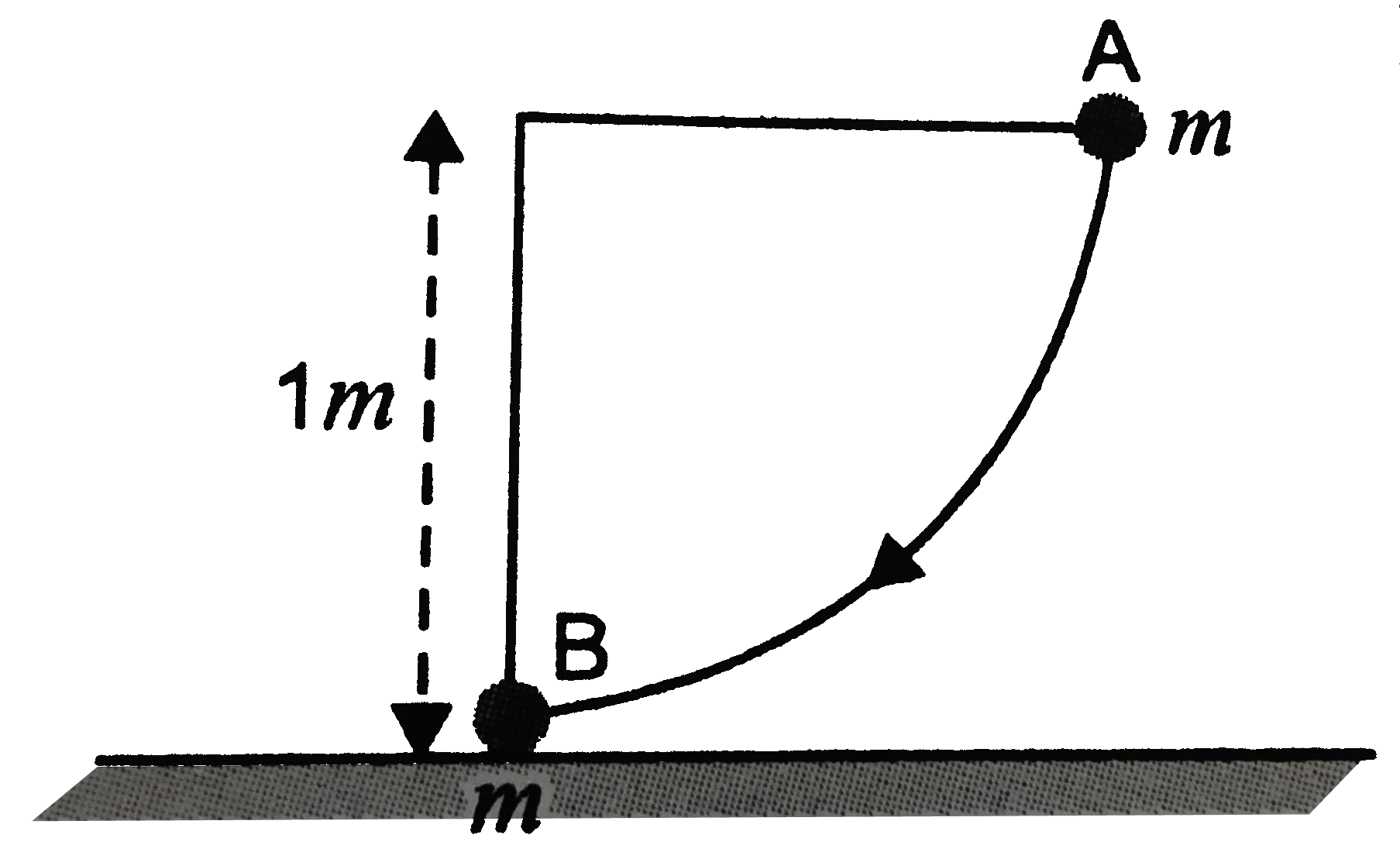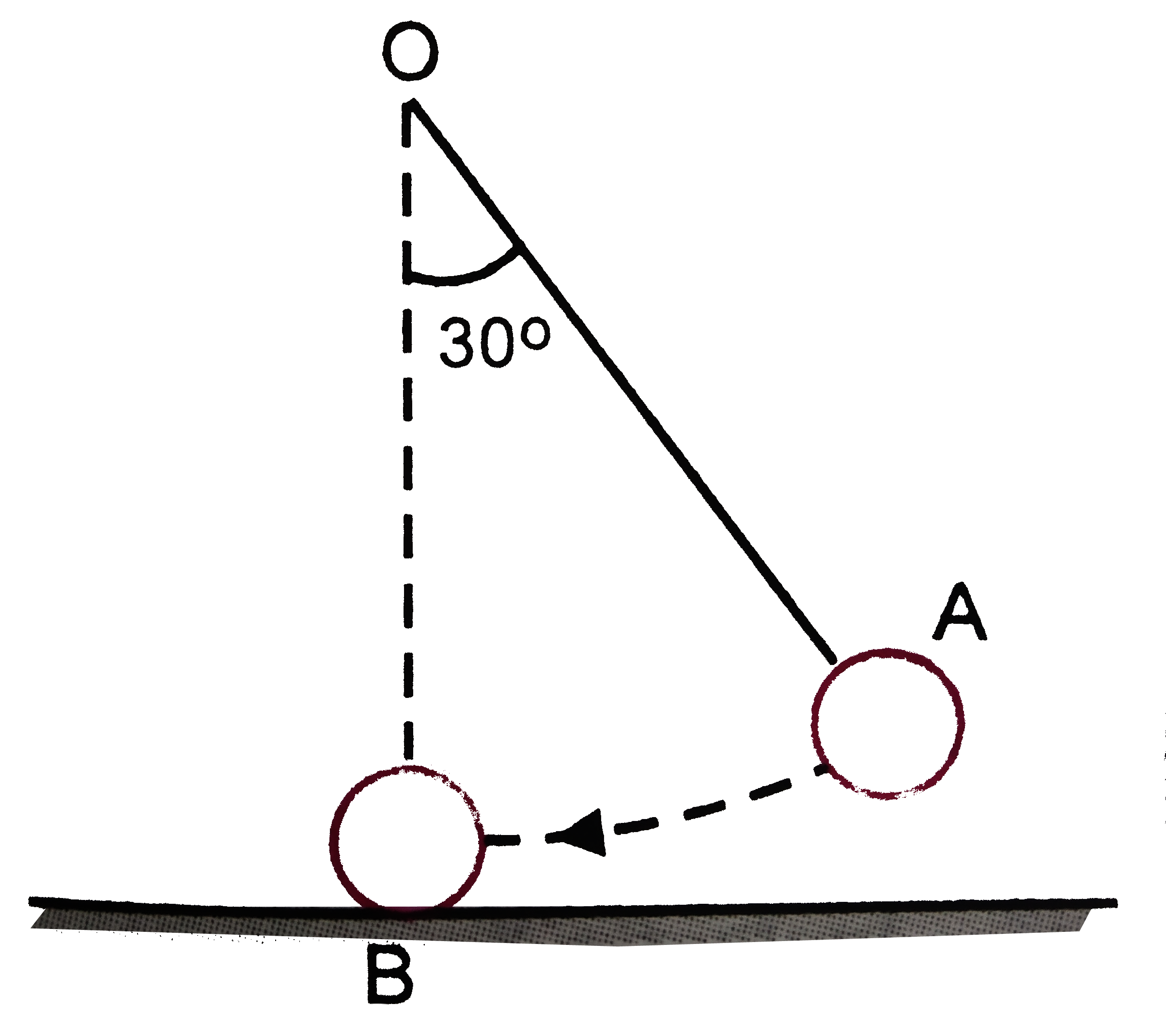The bob A of a pendulum released from horizontal to the vertical hits another bob B of the same mass at rest on a table as shown in figure.
If the length of the pendulum is 1m, calculate
(a) the height to which bob A will rise after collision.
(b) the speed with which bob B starts moving.
Neglect the size of the bobs and assume the collision to be elastic.

When ball A reaches bottom point its velocity is horizontal, hence we can apply conservation of linear momentum in the horizontal direction.
(a) Two balls have same mass and the collisaoitn between them is elastic. Therefore, ball A transfers its entire linear momentum to ball B. Hence, ball A will come to at rest after collision and does not rise at all

(b) Speed with which bob B starts moving
=speed with which bob hits bob B
=√2×9.8×1
=√19.6
=4.4m/s
NOTE: When the bob A is at the bottommost point, its velocity is velocity is horizontal and tension is the external force on the bob but still momentum can be considered to be conserved in horizontal because the tension has no effect in horizontal direction at the horizontal point.
Similar Questions
The bob A of a simple pendulum released from 30∘ to the vertical hits another bobo B of the same mass at rest on a table as shown in figure. How high does the bob A rise after the collision ? Neglect the size of the bobs and assume the collision to be elastic.

View SolutionThe bob A of a simple pendulum is released when the string makes an angle of 45∘ with the vertical. It hits another bob B of the same material and same mass kept at rest on the table. If the collision is elastic, then

View SolutionThe bob A of a simple pendulum is released from a horizontal position A as shownin in figure. If the length of the pendulum is 1.5m , what is the speed with which the bob arrives at the lowermost point B, given that it dissipates 5% of its initial energy against air resistance ?

View SolutionIf a bob of mass 'm' is attached as shown in figure. When displaced , the pendulum will undero S.H.M. with a period T is equal to

View SolutionThe bob of a simple pendulum of length l dropped from a horizontal position strikes a block of the same mass elastically, placed on a horizontal table (frictionless) as shown in the diagram, the block shall have kinetic energy-

View SolutionA ball of mass m moving horizontally at a speed v collides with the bob of a simple pendulum at rest. The mass of the bob is also m. If the collision is perfectly elastic and both balls sticks, the height to which the two balls rise after the collision will be given by:
View SolutionIf the metal bob of a simple pendulum is replaced by a wooden bob, then its time period will
View SolutionThe string of a pendulum is horizontal. The mass of the bob is m. Now the string is released. The tension in the string in the lowest position is -
View SolutionA simple pendulum is released from A as shown. If m and 1 represent the mass of the bob and length of the pendulum, the gain kinetic energy at B is

View SolutionA pendulum initially is at rest in vertical position. The bob is pulled slowly towards right. Find the change in gravitational potential energy of the pendulum bob of mass m as the function of x.

View Solution

